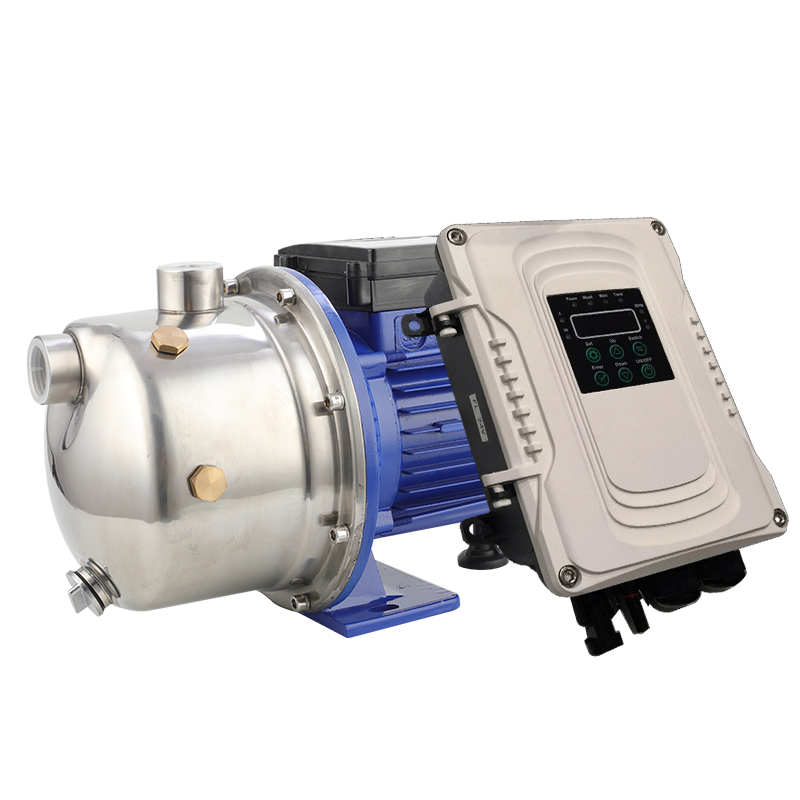Powering large water pumps with grid electricity is expensive and unreliable—worse, blackouts or fuel shortages could bring operations to a halt. Switch to solar power to reduce costs, stabilize supply, and gain energy independence.
A 50HP solar water pump system can operate efficiently using the right configuration of panels, inverters, and control systems. Proper planning ensures reliable performance.
Let’s dive into what it really takes to get your high-capacity water pump running on solar.
Can I Connect a Solar Panel Directly to a Water Pump?
While it may sound simple, directly connecting a solar panel to a 50HP water pump isn’t practical—or safe. Large-capacity pumps like a 50-horsepower (approximately 37kW) unit require a stable and powerful energy source, which solar panels alone cannot provide directly. Instead, these systems must be designed with proper solar arrays, inverters, and pump controllers to regulate voltage and current.
A solar powered water pump setup typically includes:
A solar array sized to match energy demands
An inverter or solar drive to convert DC to AC
Connecting directly would bypass the necessary voltage regulation and fail to supply the high startup torque needed by the motor. To power a large solar water pump system, engineering and control components are essential for safety, performance, and pump life span.
How Many Solar Panels Do I Need for a 50HP Water Pump?
A 50HP water pump consumes around 37 kilowatts of power. To supply this load using solar, we need to calculate total panel wattage, considering efficiency losses. On average, solar panel output is about 250 to 550W per panel, and energy production varies with sun hours and site conditions.
Let’s break it down:
Power required: 37kW
Accounting for 20–30% losses (inverter, wiring, temperature): You need about 48–50kW of solar
With 500W panels: 100 panels minimum
Space required: Each panel covers ~2 m², so around 200 m² of space is needed
Also factor in daily sunlight hours. In regions with 5 peak sun hours, a 50kW array would generate ~250kWh/day—adequate for intermittent or time-controlled pump operation. Battery storage or grid-tie may be required depending on pump usage timing.
To summarize: around 100 high-efficiency solar panels are needed to power a 50HP solar powered water pump, with room for scalability based on local conditions.
Steps to Connect a 50HP Water Pump to Solar Panels
Powering a 50HP pump with solar requires an integrated system—not just plugging in panels. Follow these essential steps to ensure safe and reliable operation:
1. Assess Pump Power Requirements
Confirm the motor’s rated voltage, phase (usually 3-phase), and starting surge. Check whether it supports variable frequency drive (VFD) or soft start for smoother integration.
2. Design the Solar Array
Size the solar array to match energy demand, factoring in local sunlight hours, weather conditions, and daily pump run time. Use high-efficiency panels from reliable brands with proven performance.
3. Select the Right Inverter or Solar Drive
For a 50HP pump, a solar pump inverter (solar VFD) is essential. It converts DC from panels to AC, adjusts frequency, and protects the motor. Look for smart solar drives that support MPPT (maximum power point tracking) and remote monitoring.
4. Mount and Connect Panels
Install solar panels securely with optimal tilt (typically equal to latitude) to maximize exposure. Connect in series and parallel as per voltage and current requirements. Ensure waterproof connections and surge protection.
5. Wiring and Safety Devices
Use correctly sized cables to reduce loss. Include fuses, breakers, surge arresters, and earthing for electrical safety.
6. Test the System
After wiring, test the solar water pump system under load. Monitor performance, panel output, and motor behavior to confirm stability.
7. Optional: Add Energy Storage or Grid Backup
To ensure operation during cloudy days or nighttime, integrate batteries or a grid-tie inverter. For continuous water needs, a hybrid solar powered water pump setup is often preferred.
A well-engineered solar system can reliably power a 50HP water pump, reducing fuel costs and improving energy resilience.



